Colorectal Cancer First in Terms of New Cases Diagnosed Annually
ZAGREB, 12 March 2022 - Colorectal cancer is first in Croatia in terms of cases diagnosed every year and only 20% to 30% of citizens respond to calls for screenings, it was said on Saturday at an event marking Colorectal Cancer Awareness Month.
"We have about 3,600 new cases annually and about 10% of people daily get this disease," said Krunoslav Capak, director of the Croatian Institute of Public Health (HZJZ).
This is the most frequent cancer in Croatia at the moment and we should all fight against it together through prevention and a healthier lifestyle, he added.
This year Colorectal Cancer Awareness Month is being marked for the first time under a decision of the Croatian parliament in order to highlight the importance of screenings.
In 2007, Croatia introduced a programme for colorectal cancer screening for adults aged between 50 and 74, and according to relevant statistics, residents in coastal areas seem least ready to undergo this test.
In Croatia, six people die of this disease daily on average and between 2,000 and 2,100 annually.
The HZJZ said recently that in the coastal counties, except Zadar County, the turnout for the colorectal cancer screening is under the Croatian average.
Regular screening reduces the risk of developing colorectal cancer.
The mortality rate can be reduced provided that those aged between 50 and 74 undergo regular tests and follow doctors' orders.
The HZJZ said that this would be conducive to efforts to save 1,000-1,500 patients annually.
Plenković to Meet With NATO Commander at Base Near Madrid on Wednesday
ZAGREB, 12 March 2022 - Croatian Prime Minister Andrej Plenković will visit the NATO base near Madrid on Wednesday and meet with its commander in connection with aviation control, a government source told Hina on Saturday.
Plenković is going to Madrid for a bilateral meeting with his Spanish counterpart Pedro Sanchez, who visited Zagreb last October.
The Spanish military base at Torrejón de Ardoz, 20 kilometres northeast of Madrid, is used by NATO to monitor the skies of its southern member states, including Croatia.
Although the Combined Air Operations Centre Torrejón is tasked with identifying unknown flying objects, it did not report or react to an unmanned aerial vehicle (UAV) that entered Croatia's air space on Thursday night.
The UAV is a Soviet-era TU-141 which was launched from Ukraine and crashed in the Croatian capital after flying over Romania and Hungary, both NATO members.
A source at the Torrejón base, which is manned with staff from 17 NATO nations, including Croatia, said today that "everyone is gathering data" and that analysis would take a certain time.
In Madrid, Plenković will also meet with King Felipe VI and the Spanish parliament speaker.
For more on politics, visit TCN's dedicated page.
5 Ways to Explore Istria Off the Beaten Path
March 12th, 2022 - There’s so much more to Istria beyond the famous Rovinj landscape or the olive oil and truffle fame. The region is full of treasures to discover, and we're happy to help you plan your visit with five unique ideas for things to do in Istria
And then go ahead and have those truffles anyway - we’d never think to suggest otherwise.
Walk the Parenzana trail
Not necessarily the whole thing, of course: running through three countries, the Parenzana trail is 123 kilometres long in total, and it's perfectly fine to only walk or cycle a part of it. Historically, Parenzana was known as the narrow-gauge railway which connected the Italian port city of Trieste with Poreč in Istria, passing through many inland villages and smaller towns along the way.
Fun fact: as the inauguration of the Parenzana line in Trieste was delayed several times due to various issues, the locals got skeptical after a while. When the first train ceremonially arrived in Trieste on April 1st, 1902, almost no one showed up at the railway station because people were convinced the announcement was an April Fools’ joke.
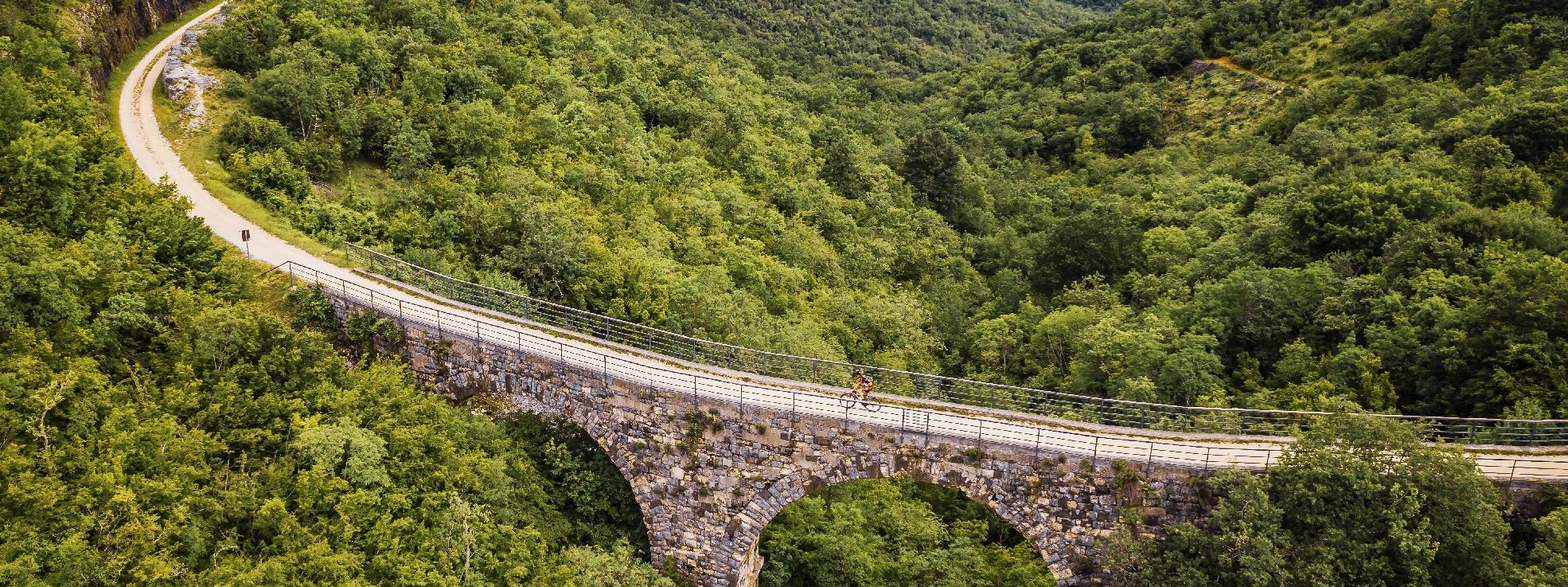 Parenzana trail / parenzana.net
Parenzana trail / parenzana.net
But it wasn’t, and the railway soon made it possible for agricultural produce to be distributed all over the region, stimulating Istria’s economic progress and becoming somewhat of a lifeline for the local population. Although the railway line ceased operation in 1935, it certainly left a mark on the region, and so it was decided to revive the route as a hiking and cycling trail.
Parenzana will take you over bridges and viaducts, now secured by guard rails; it runs through well-lit tunnels and snakes through the lush landscape. The entire trail is well-marked and is split into shorter routes - a comprehensive guide is available on parenzana.net, in several languages.
Ride the zipline over the Pazin abyss
Although Pula is the biggest town in Istria, the county’s administrative seat is actually Pazin, a town located in the very centre of the region.
Pazin boasts a medieval castle that was once a residence of Istrian margraves and hasn’t lost any of its grandeur with time. Perched on top of a tall cliff plummeting into the Pazin abyss, the castle dominates the majestic landscape which inspired literary giants of the likes of Dante Alighieri and Jules Verne.
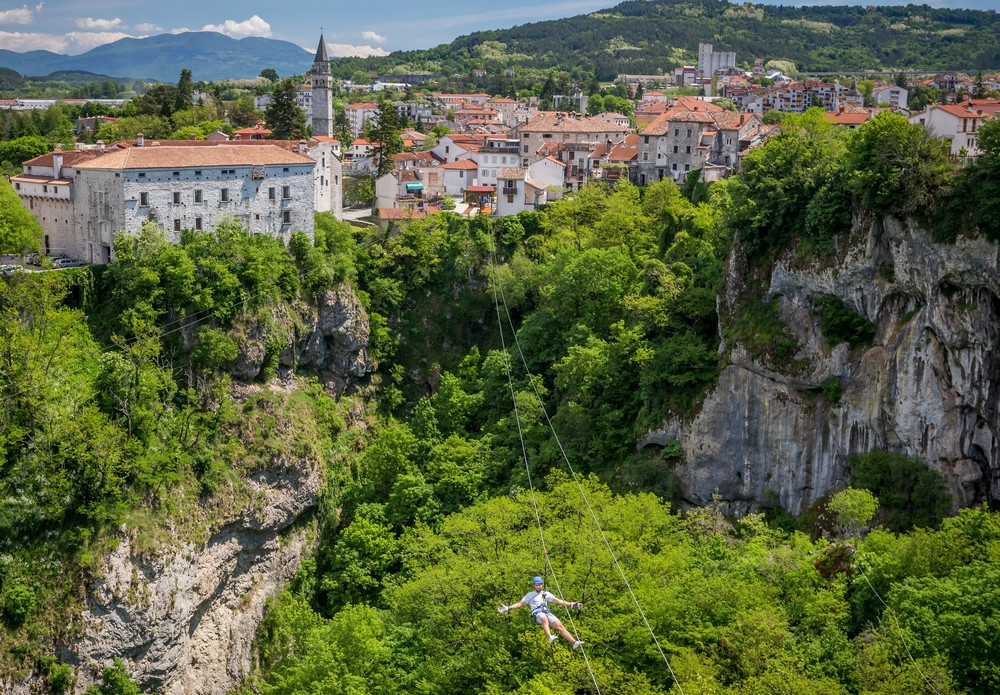 Pazin / Central Istria Tourist Board, photo by Julien Duval
Pazin / Central Istria Tourist Board, photo by Julien Duval
And what better way to take in the impressive sights than flying over the natural attraction? The Pazin zipline runs over the abyss in two stages: the first cable is 220m long and the second 280m, giving adrenaline lovers plenty of time to admire the historic landscape, as well as the karst phenomenon down below.
The zipline operates regularly from May 1st, but can be visited in the off-season as well upon request, provided you’re visiting with a group - contact info is available on their Facebook page.
Hike the contraband trails of Učka mountain
Have you ever had a chance to retrace the steps of smugglers of the past? A few years ago, three unique hiking trails were established on the Učka mountain, the natural border between Kvarner and Istria, introducing hikers to the history of contraband activity in the area.
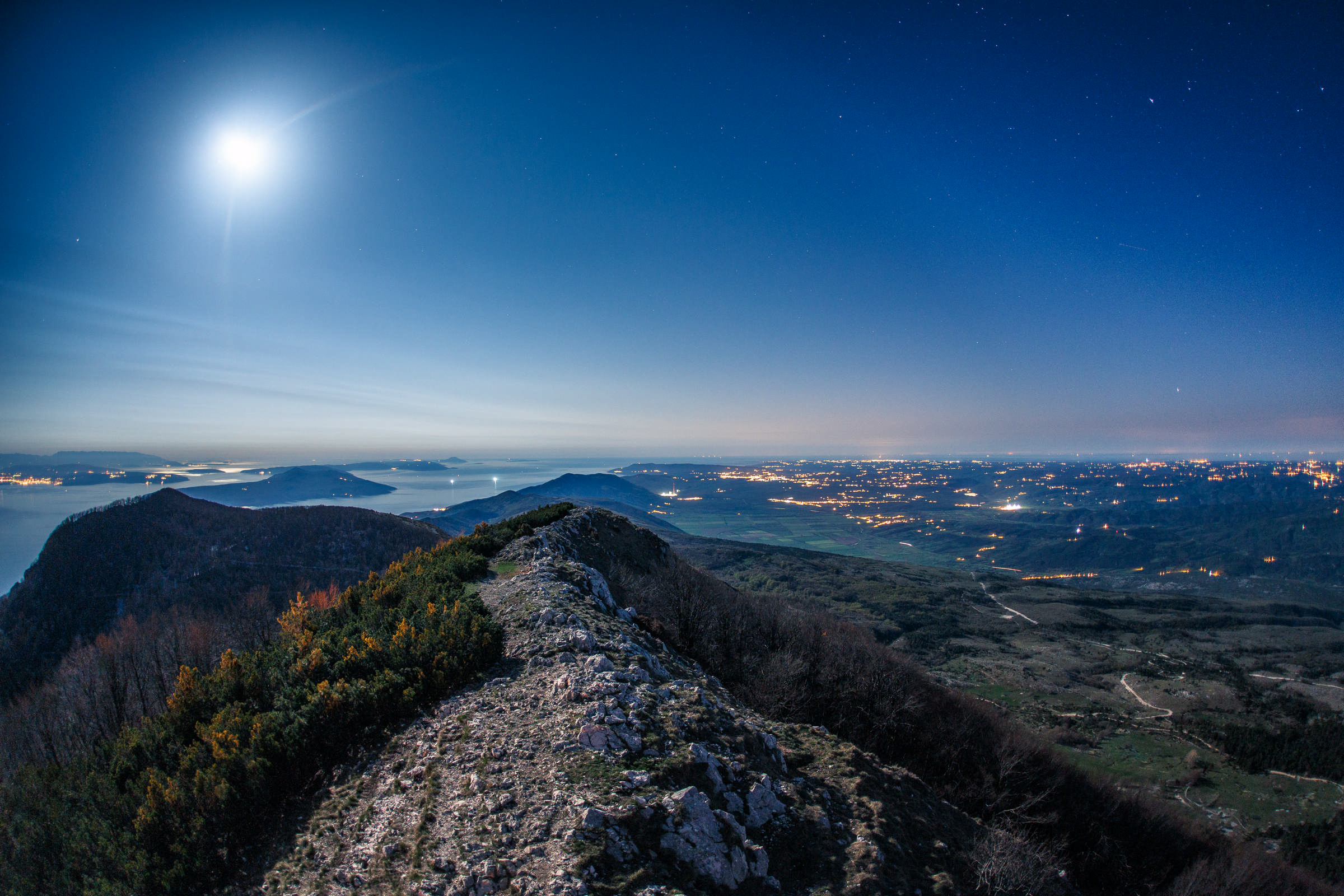 Učka mountain © Mario Romulić
Učka mountain © Mario Romulić
In the 1930s, a duty-free zone was established on the coastline around Rijeka to stimulate tourism and the local economy. Overnight, consumer goods became much cheaper, and the struggling population soon started to smuggle products such as sugar and petroleum out of the duty-free zone and over the Učka mountain on foot. They sold the goods for profit in the rest of the region as a way to survive in times of scarcity - check out this TCN feature for the full story.
You can find detailed information about the hiking routes in a dedicated mobile app, along with a list of accommodation providers and restaurants in the area. It’s available to download on GooglePlay and AppStore - search for 'Kontraband thematic trails'.
Discover the history of mining in Raša
Istria has a long history of coal mining, specifically in the area around Labin town located off the eastern coast of the peninsula. Arguably the most unique place in the mining landscape is Raša, known as Istria's youngest town which was purposefully built in the 1930s to house miners and their families.
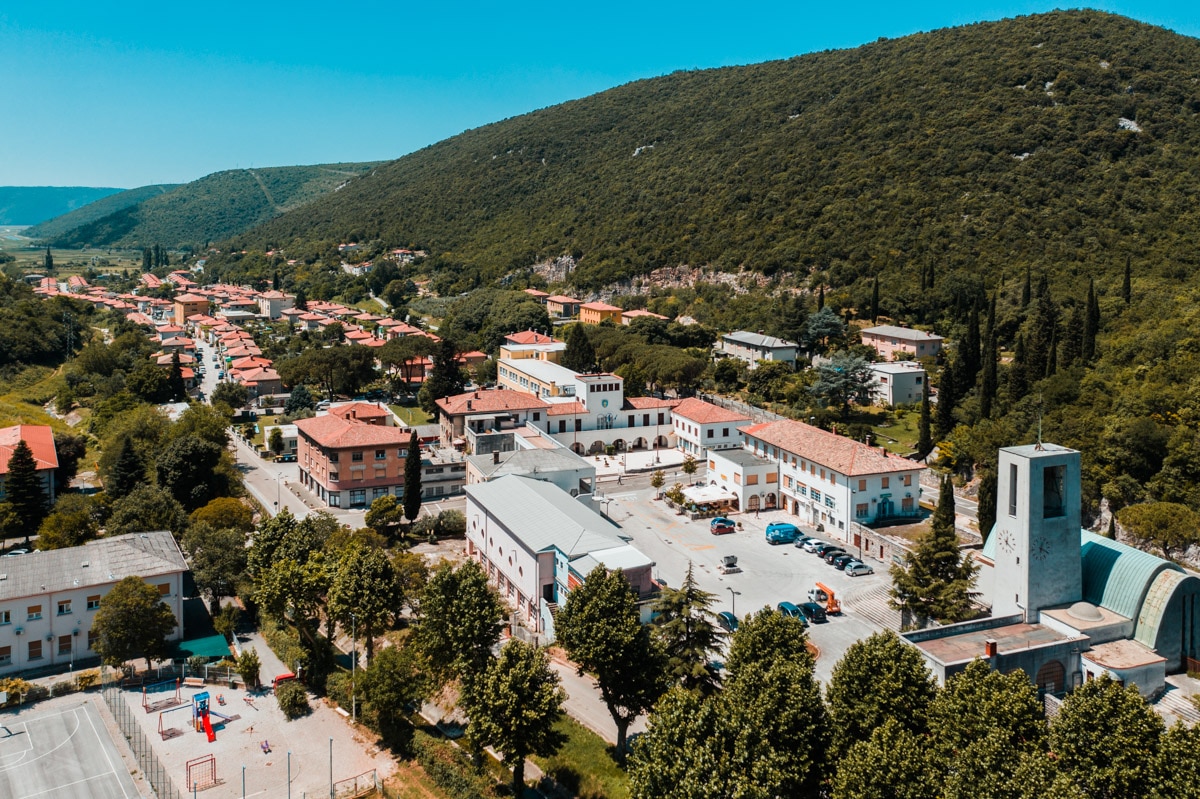 Raša town / Raša Tourist Board
Raša town / Raša Tourist Board
Two pairs of streets lined with former miners’ houses meet at the central square in Raša, crowned with a church built in the shape of an overturned mining cart and dedicated to the patron saint of miners, St Barbara.
Even though the mines closed a long time ago, you can experience what it was like to spend your days in the dark underworld. Located on the main square in Raša, the Miners House Arsia tells the story of Istrian miners and provides insight into their lives both above and below ground.
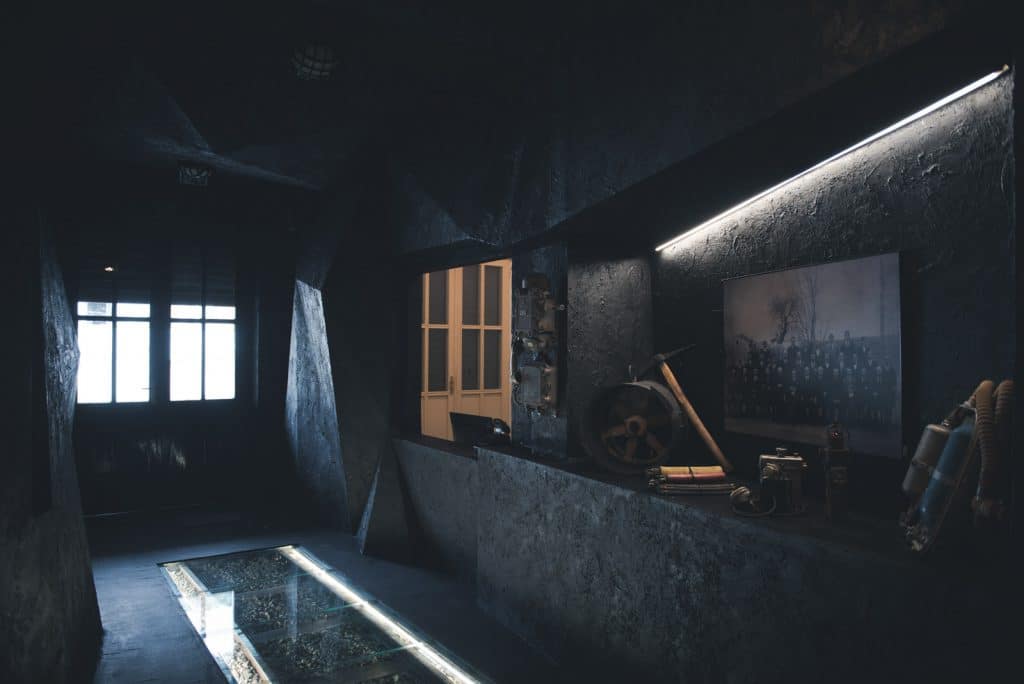 Miners' House Arsia / Raša Tourist Board
Miners' House Arsia / Raša Tourist Board
Starting from the entrance built like a mining shaft, the museum evokes the atmosphere of a mine - you can walk on the original railroad tracks surrounded by the sounds of coal digging and distant explosions, watch archival films to learn the stories of real miners who once inhabited the town, but also step into their homes thanks to a perfect recreation of a typical miner’s apartment.
Learn more about the Miners’ House over at the Raša Tourist Board.
Visit Croatia’s oldest lighthouse in Savudrija
The Adriatic coast is dotted with numerous historic lighthouses, most of them built in the 19th century. The one in Savudrija, the northwestern tip of Istria, boasts two champion titles: it’s the oldest active lighthouse in Croatia, and the world’s first lighthouse powered by coal gas.
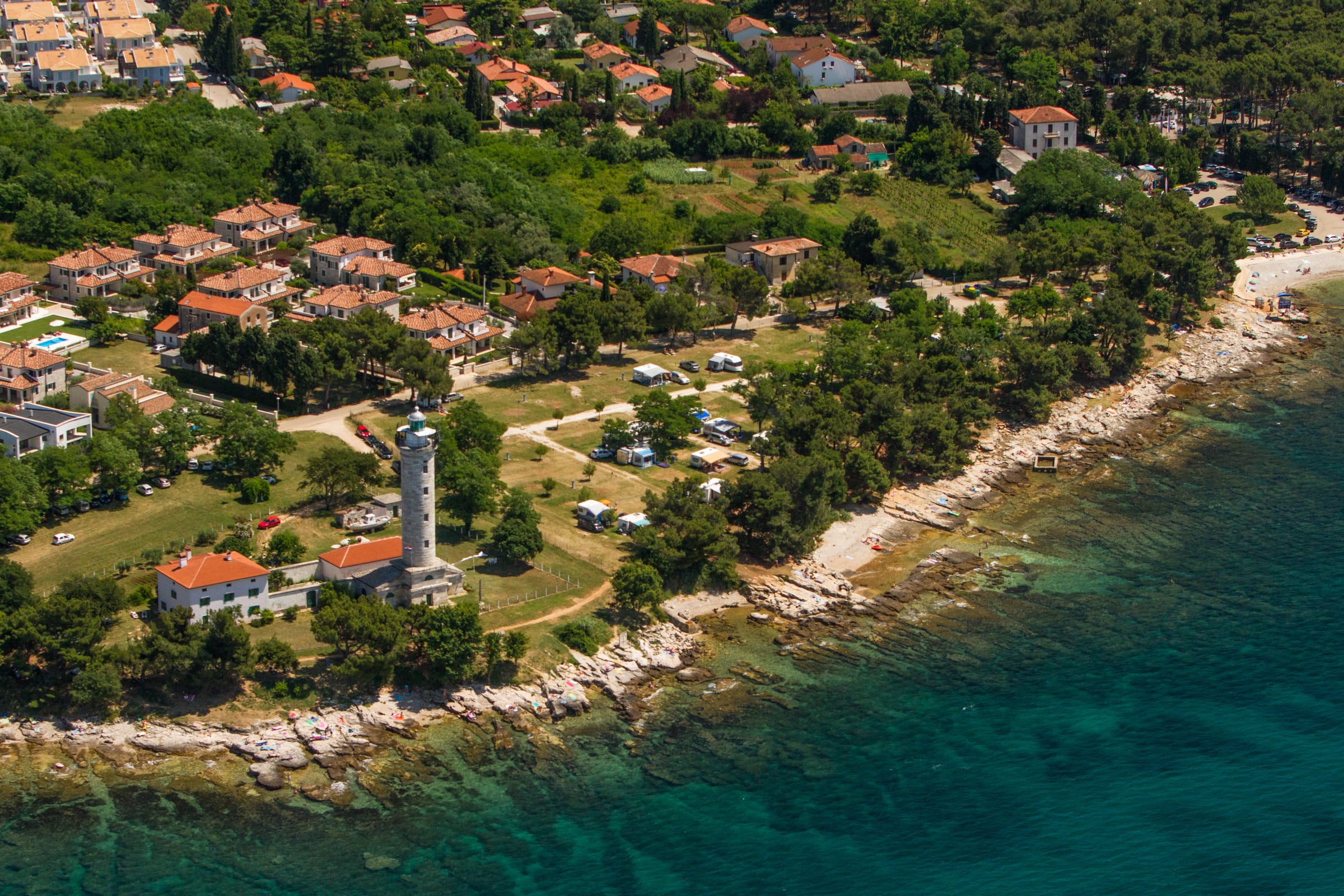 Savudrija lighthouse © Mario Romulić
Savudrija lighthouse © Mario Romulić
The lighthouse was built of white Istrian stone and powered by coal shipped in from the Labin mines. It was inaugurated in 1818 and became a local sensation overnight: people were so fascinated by the new structure, the lighthouse keepers were soon granted a licence to bear arms and were instructed to shoot any enthusiasts who attempted to scale the building and climb to the top.
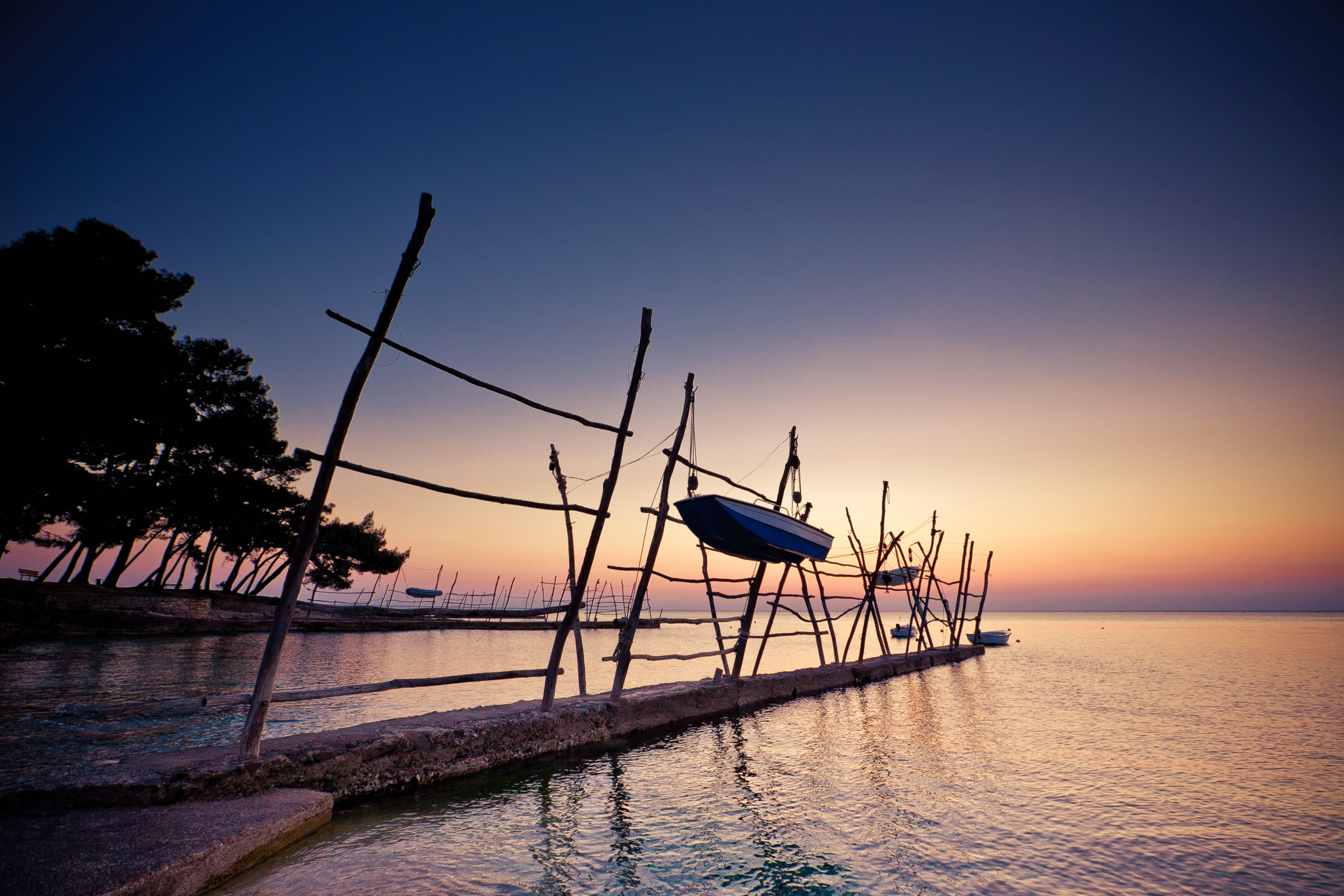 Savudrija © Mario Romulić
Savudrija © Mario Romulić
Nowadays fully automated and monitored by a single keeper, the lighthouse isn’t that much of a novelty anymore, but is still a beautiful landmark and in itself a good enough reason to visit Savudrija. Let it also be known that the place boasts a pretty spectacular coastline, lined with pines and traditional fishermen's boats. The waters around Cape Savudrija are favoured by surfers and divers alike.
Capak: Relaxation of COVID Restrictions Still Being Considered
ZAGREB, 12 March 2022 - Croatian Public Health Institute director Krunoslav Capak said on Saturday that the possible relaxation of coronavirus restrictions, announced for next week, was still being carefully considered given a slight increase in new cases in recent days.
"Since we have had a slight increase in infections, I cannot say if there will be a further relaxation of measures," Capak told reporters in Zagreb during a public health campaign marking Colorectal Cancer Awareness Month.
Even though some media outlets have announced that the restrictions on hospitality establishments will be eased and that nightclubs will be allowed to stay open until 2 am, Capak did not confirm this.
"A possible relaxation is still being considered, and what is certain is that COVID passes will remain mandatory for healthcare and social welfare services," he said.
The slight increase in new cases will be taken into account in deciding on the relaxation of restrictions, and Capak said that Croatia was not an isolated case in this regard as most European countries were in a similar situation.
One of the reasons is the more infectious BA.2 subvariant of the Omicron variant of the SARS-CoV-2 virus, which is becoming dominant in western Europe, people thinking that the epidemic is over, resumption of school classes, and cold weather, as a result of which people spend more time indoors.
Capak noted that the slight increase in new infections did not mean the beginning of a new wave of the epidemic and that it was yet to be seen what would happen in the coming days.
"The increase in new infections is a warning that the epidemic is not over and that we should comply with the epidemiological measures which are still in force," Capak said, adding that the turnout for vaccination was not satisfactory.
"People have given up, they are still postponing vaccination thinking that the epidemic is over. There are enough vaccines and vaccination should continue because it is a very powerful weapon," Capak said, calling on people to observe hygiene rules, wear face masks, maintain a physical distance and air out their rooms.
Plenković: EU Was united, Quick and Efficient in Response to Russian Invasion
ZAGREB, 12 March 2022 - The European Union has demonstrated unity, speed and efficiency in response to the Russian invasion of Ukraine and will continue to adopt sanctions against Moscow, Croatian Prime Minister Andrej Plenković said in interviews with two France24 programmes on Friday.
"The purpose of all three sanctions packages is to prevent Russia from carrying out this brutal aggression on Ukraine. The European Union once again demonstrated unity, our political position was quick, efficient and clear," Plenković told the Ici l'Europe programme, speaking in French.
He spoke of the consequences of the Russian invasion, which has entered its third week.
"First, it is a tragedy for the Ukrainian people, with whom we stand in solidarity. Second, it has triggered a refugee crisis in Europe unprecedented since 1945, and third, energy prices have gone up," Plenković said, adding that the latter was the main subject of a two-day summit of EU heads of state or government in Versailles, which ended on Friday.
Europe's dependency on Russian gas is above 40 per cent, and the EU leaders are trying to change this "by increasing domestic production or by importing from other gas producing countries such as Norway, Azerbaijan, Libya or Algeria, or by importing liquefied natural gas by sea," Plenković said in the Talking Europe programme. He mentioned the construction of the LNG terminal on the northern Adriatic island of Krk, which provided Croatia with an alternative gas supply route.
The EU heads of state or government have sent "a strong political signal that we want to intensify relations with Ukraine in any way possible on its European path," the Croatian PM said.
However, the 27 EU member states have made it clear to Ukraine that it will not be able to join the EU under fast track.
Plenković said he had met with Ukrainian President Volodymyr Zelenskyy in Kyiv in December and signed a declaration on Ukraine's European perspective, stressing that he remained committed to this process.
Plenković said it was important that the EU was united in its condemnation of the Russian invasion. "After the statements by the Russian foreign minister we can conclude that we live in two different realities and that's why we will continue sending strong messages and adopting packages of restrictive measures to let Moscow know that what it is doing is not appropriate and that it should end it immediately," he said.
For more on politics, visit TCN's dedicated page.
Croatia Logs 1,575 New Coronavirus Cases, 13 Deaths
ZAGREB, 12 March 2022 - Croatia has recorded 1,575 new coronavirus cases and 13 COVID-related deaths in the last 24 hours, the national coronavirus response team reported on Saturday.
The number of active cases currently stands at 10,115. Among them are 745 infected people who have been hospitalised and 53 of them of them are on ventilators, while 7,129 people are self-isolating.
A total of 4,579,536 people have been tested for the SARS-CoV-2 virus to date, including 5,587 in the last 24 hours.
Since 25 February 2020, when the first case was confirmed in Croatia, 1,072,430 people have been registered as having been infected with the novel virus, of whom 15,321 have died and 1,046,994 have recovered, including 1,462 in the last 24 hours.
By Friday, 5,208,696 COVID vaccine doses have been administered, with 56.88 per cent of the total population, or 67.66 per cent of adults, having been vaccinated. A total of 2,308,467 people have received at least one dose and 2,234,233 of them have been fully vaccinated, which is 65.61 per cent of the adult population.
13m Tourists Stay in Croatia's Commercial Accommodation in 2021
ZAGREB, 12 March 2022 - Nearly 13 million tourists stayed in commercial accommodation in Croatia in 2021 and generated 70 million bed nights, which are increases of 82.5% and 72.1% compared with 2020, while compared with record 2019 the number of tourist arrivals was down by 35% and that of bed nights by 23%, according to data from the National Bureau of Statistics.
The number of domestic tourists in commercial accommodation increased by 47% from 2020 to 2.1 million and the number of bed nights rose by 36% to 7.4 million. Compared with 2019, the number of tourists fell by 3.5% while the number of bed nights increased by 3.6%.
The number of foreign tourists grew by 92% from 2020 to 10.6 million and they generated nearly 63 million bed nights, up by 77.6%. Compared with 2019, the number of foreign tourists was down by 38.7% and that of bed nights by 25.3%.
Among the foreign visitors, Germans were the most numerous (2.7 million, +85%). They generated nearly 20 million bed nights (+70%), or nearly 32% of all foreign bed nights in commercial accommodation. They were followed by Poles, Slovenians, Austrians and Czechs, who all generated more bed nights than in 2020.
By region, Istria County recorded the largest number of tourists and bed nights - 3.4 million and 21.7 million respectively, which are increases of 94.2% and 90% compared with 2020. It was followed by Split-Dalmatia County (2.3 million tourists, 13.5 million bed nights) and Primorje-Gorski Kotar County (2.2 million tourists, 12.4 million bed nights), which were increases for both counties.
By type of commercial accommodation, the largest number of nights were spent in holiday and short-stay accommodation (including private households) - 37 million, which is an increase of 50.1% compared with 2020.
Camping grounds followed with 17.5 million nights (+91.5%), while 15.7 million nights were spent in hotels, twice as many as in 2020.
Croatian Airports Record Large Increases in Passenger Numbers in January
ZAGREB, 12 March 2022 - Croatian airports served 170,000 passengers in January 2022, which is an increase of 246% compared with January 2021, according to data from the National Bureau of Statistics.
However, the number of passengers recorded in January 2022 was only 66% of the number for pre-pandemic January 2020.
Zagreb Airport served the largest number of passengers (139,200, +272%), followed by the airports at Split (19,600, +164%) and Dubrovnik (9,200, +150%).
The airports at Pula, Osijek, Zadar, Rijeka, Brač and Lošinj recorded considerably fewer passengers, below 1,000 each, but the Pula, Osijek and Zadar airports reported large increases in passenger numbers, of 258%, 200% and as much as 742% respectively.
The airports at Rijeka, Brač and Lošinj, which are largely seasonal airports, recorded fewer passengers than in January 2021.
The largest number of passengers came from Germany (35,300, +242.3%), the Netherlands (13,300, +163.7%) and the Russian Federation (10,700, no comparison with January 2021 was given).
The airports had nearly 4,000 flight operations (+82%) and handled 679 tonnes of cargo (+22%).
Make sure to check out our dedicated travel section.
Prime Minister Andrej Plenković Visits Drone Crash Site in Zagreb
ZAGREB, 12 March 2022 - Prime Minister Andrej Plenković visited the drone crash site in Zagreb on Saturday morning.
A Soviet-era unmanned aerial vehicle crashed in the Jarun area of southeast Zagreb on Thursday night.
The drone was launched from the territory of Ukraine and crashed in Zagreb shortly after 11 pm on Thursday after running out of fuel, having flown over Romania and Hungary.
"We don't know whose it is, everyone says it isn't theirs," Plenković said. He added that it was down to luck that no one had been hurt, apart from about 40 cars that had been damaged in a nearby car park.
"This indicates the need for closer cooperation within NATO itself because this is NATO's air space, as well as Romania's Hungary's and Croatia's. We cannot tolerate this kind of situation and it should not happen in the future. This was a very clear and present threat which requires a response," the prime minister said.
Plenković said that he would raise this issue in all NATO and EU institutions and call for an effective and rapid response. He added that yesterday he had informed all EU leaders of what had happened and had sent a letter to NATO's secretary-general noting that something like this could happen to other cities.
Theoretically speaking, this could have been Budapest, Ljubljana or Bratislava, but what is important is for us to step up our cooperation, he said.
"Was it accidental, was it an error, was it intentional, we don't know at this moment," Plenković said, adding that the incident was being investigated by the military, police, and the State Attorney's Office.
He said that the drone would be dug out of the ground to see if contained any valuable information, and the authorities would contact other countries for more information.
The prime minister was accompanied by relevant government officials.
For more on politics, visit TCN's dedicated page.
New Ryanair Zagreb-Brindisi Line Announced for 2022 Summer
March 12, 2022 - The latest flight news to Croatia as a new Ryanair Zagreb-Brindisi line has been announced to replace the recently canceled Lviv-Zagreb line.
Irish low-cost airline Ryanair introduces a new route from Zagreb International Airport in just over two weeks! Namely, Ryanair will introduce a regular route between Zagreb and Brindisi on March 27, the airline's fourth route from Zagreb to Italy, reports Croatian Aviation.
The line will be in operation from the beginning of the summer flight schedule, March 27, twice a week, on Wednesdays and Sundays, until the end of October, i.e., October 26, 2022.
A total of 22,320 seats are on sale, and tickets start at 10 euros one way. This is a line that will be in traffic in the afternoon and evening, and an A320 aircraft with a capacity of 180 seats in the passenger cabin has been announced.
The new line will replace the previously announced Lviv-Zagreb line, which was canceled due to the war in Ukraine.
Ryanair announced the Lviv-Zagreb line in mid-January this year and had plans to operate on it from the very beginning of the summer flight schedule - on March 27. Fights were planned twice a week, every Wednesday and Sunday.
The Irish airline closed sales on all routes from Lviv, including the announced route to Zagreb. A total of 22,320 seats were on sale, and Lviv was to be the second city in Ukraine with which Zagreb was to have a direct connection. Ryanair has announced its return to Ukrainian airports as soon as security conditions allow.
In addition to Brindisi, Ryanair from Zagreb operates to Rome Fiumicino, Bergamo, and Naples. Ryanair is also introducing new lines from Zagreb to Bratislava and Corfu this summer.
“There are some tourist destinations from Zagreb that can be served in the future and that are of interest to us too. We really believe that Zagreb can be attractive all-year-round, not just for families and the diaspora, but for tourists as well, so we want to use all these opportunities in the future," Tadej Notersberg, Director of Operations of Ryanair’s subsidiary Lauda Europe, told EX-YU Aviation last week.
For more on flights to Croatia and other travel announcements, make sure to check out our dedicated travel section.


